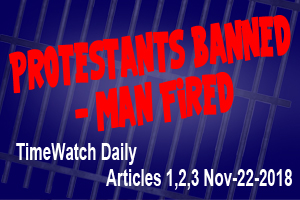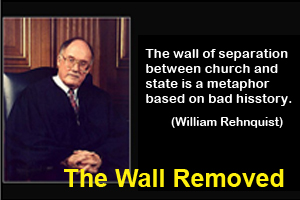
A Single Voice – Part 1
TimeWatch Editorial
May 25, 2016
Milian Lauritz Andreasen is not well known by the majority of today’s Adventist church. That fact alone is an important statement about where we are today. In his book “Letters to the Churches,” there is his detailed Biography. M. L. Andreasen was born in 1876 in Denmark. He was ordained into the gospel ministry in 1902. Just seven years later he became President of the Greater New York Conference from 1909 to 1910. Then he moved on to be President of the Hutchinson (SDA) Theological Seminary from 1910 to 1918. His march through the institutions of the church continued as Dean of Union College from 1918 to 1922. During these years he received a Bachelor of Arts degree from the University of Nebraska in 1920 and a Master of Arts degree from the same institution in 1922. Immediately following his Master of Arts degree, he became Dean of Washington Missionary College from 1922 to 1924 and the President of the Minnesota Conference from 1924 to 1931.
He joined Union College as President from 1931 to 1938 and then became Professor of Theology at the Seventh-day Adventist Theological Seminary (at Washington D.C.) from 1938 to 1949. Andreasen was also Field Secretary of the General Conference from 1941 to 1950.Pastor Andreasen was a prolific writer, author of numerous Seventh-day Adventist books that were published by our denomination, including: "The Sanctuary Service," "The Epistle to the Hebrews," "A Faith to Live By," and 'What Can a Man Believe?'He ultimately died in the year 1962.
One would have imagined that such an experienced and prolific servant of God would be remembered at the very least these last fifty years or so. But the memory of M.L. Andreasen has been effectively erased. For years the fundamental truths of the Bible were embraced as the Pillars of the Faith by traditional Adventists. What, I hear you ask, are these “Pillars of the Faith?” Here they are:
Justification by faith, Sanctification by faith, Glorification, The Sanctuary Message, The Atonement, Christ’s Human Nature, The Spirit of Prophecy, Obedience to God’s Holy Law including the holy Sabbath day and holy worship.
Russell Standish, in his publication entitled: A History of Questions on Doctrine Fidelity or Compromise, discusses two men who were evangelicals. These men in a number of conversations and discussions expressed disdain for the theological positions of Adventism.
Dr. Donald Barnhouse was one of these men.
“The Barnhouse article was entitled, "Spiritual Discernment, or How to Read Religious Books." It illustrated the difficulty that conservative Christians sometimes have in understanding one another. Here a man of great spiritual stature, a bold crusader for truth, revealed his prejudice against Adventism and Ellen G. White, whom he erroneously called, "founder of the cult.” ''The Seventh-day Adventist Evangelical Conferences of 1955 – 1956, by Adventist Laymen's Foundation
Walter R. Martin was another critic of Adventism. These two men were critical enough in their assessment of Adventism to cause the leadership to want to shift our fundamentals to be accepted by these evangelicals. There were a number of subsequent meetings held between the leadership of the Adventist church and Barnhouse and Martin. Ultimately, the book, Questions on Doctrine was the result. This was a watering down of the Pillars of the Faith and a move away from the faith of our fathers. Russell Standish, on page seven of his publication entitled: A History of Questions on Doctrine Fidelity or Compromise, asks and answers a very important question.
“How did an entire generation of faithful pastors and laypeople permit our treasured Christ-inspired faith to be utterly destroyed?” The means employed were as simple as they were few. I summarize:
- Those close to the development of Questions on Doctrine remained silent.
- The support of the General Conference President was accepted as evidence of Questions on Doctrines veracity.
- Men most qualified to evaluate truth, including Elder Andreasen, were provided no input into Questions on Doctrine.
- Punitive action was taken against men who dared to oppose the New Theology teachings. Many ministers and laypeople silenced their concerns rather than invoke ecclesiastical penalties.
- Those refusing to accept the debasing of the faith were belittled and publicly denigrated, accused of disloyalty, changing doctrines and denounced as schismatics.
- In 1980 in a most acrimonious session of a General Conference Quinquennial meeting the Twenty-seven Fundamentals were voted, without full worldwide examination. Some of the Fundamentals were crafted with deliberately shaded meanings and omitted salient doctrines which were judged to be in opposition to the New Theology.
- Our denominational publications have served as mediums for the promotion of the tenets of the New Theology.
- The alterations in doctrine were never placed before a General Conference Session. Russell Standish, A History of Questions on Doctrine Fidelity or Compromise
Amidst the deafening silence, one voice was heard. Who that was, and what was the result will follow in our next editorial.
Cameron A. Bowen







